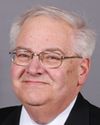Thank you for the opportunity, and thank you to the larger committee for the opportunity to be here.
Dr. Lewanczuk has highlighted a number of different types of initiatives that we've put in place that deal with, first of all, understanding what the problems and the needs of people are, and then with trying to make sure there is timely access to care, whether that be a simple call from a nurse or a dietician to ask people how they're making out, or whether it be attending a formal group education program.
There are a number of things. One is a central access system. There's a phone line that patients can call. It's widely advertised. People know how to access our team at any time. We have leveraged off some of the successes of Health Link Alberta, which is a provincial nurse call centre where our diabetes educators have spent some time training some of the nurses who are available 24/7 to help patients.
We know that people get into trouble at all times of the day and night. Quite often diabetes centres work eight to four, typically, Monday to Friday. So having this available 24/7, 365 days of the year, as somewhere people can get that kind of personal contact, is great. We have information available on websites that people can go into. We're actually now exploring some e-health technology as a way to customize information and have more virtual contacts and connections with people. Giving people lots of different options as opposed to the old traditional approach of, “Here's your brochure, and here's your program to take”, certainly, I think, has helped with access.
As Dr. Lewanczuk mentioned, we monitor all the time. As soon as we see pressure starting to build, we learn about the population, what works with them, and what's been successful, not just for diabetes but for other jurisdictions, and we see how they've dealt with the needs of these patients. One of the examples is the Northeast Community Health Centre, into which we've gone and provided free lunch. What a great way to get to know not only the people who attend but their friends who might have diabetes. We link with running rooms. We link with community agencies to deliver lots of lifestyle education programs. Partnerships have also been really important and have helped us to identify other people in need.
There are lots of different innovations. We're trying to not be static. We want to be responsive, so our people are out in the communities trying to learn how best to meet the needs of our patients.



